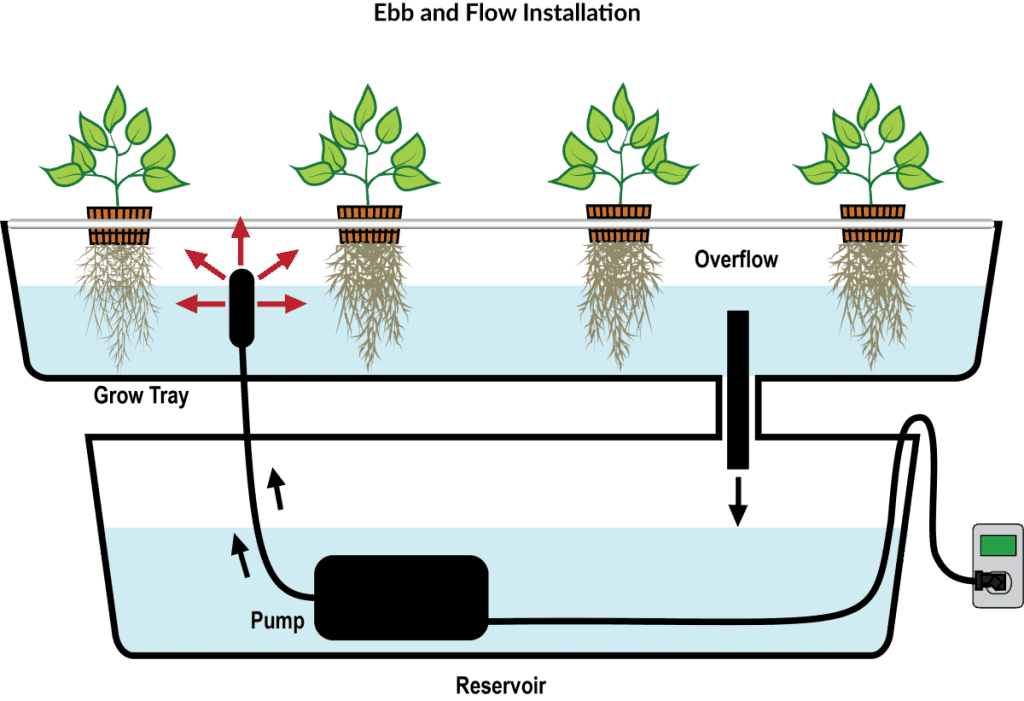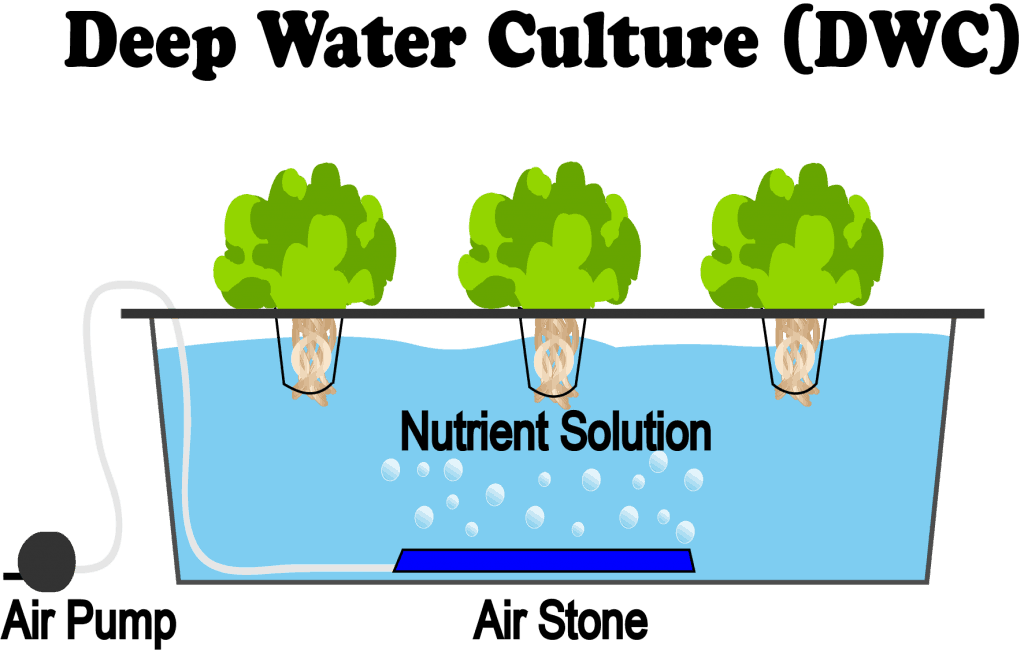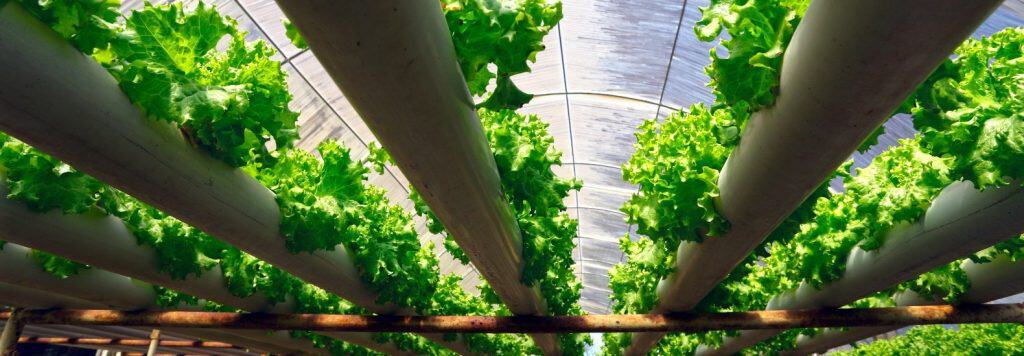Hydroponics is the relatively easy and hassle free way of growing plants. The soil less plant growing technology is quickly catching on with farmers also. Hydroponic also has advantages in the fact that we don’t have to check about the season for crop growing or do tedious work as soil rotation, ploughing etc.
Through hydroponics we can grow most of the crops free from soil and also in limited space which can be indoor or outdoor. Indoor hydroponics gives the benefit of providing artificial light so that we can create crops through snow or rain. Here we can also control the amount of light required by each crop. By investing an amount in the beginning we can ripe the profits for a long time.
There are many techniques with hydroponics; the system which is appropriate to you depends on the space, light availability, water availability and the species of plants. The hydroponic system is an efficient way to produce great quality produce and its getting popular with urban farmers who don’t have the advantage of large space.
There are six main systems in hydroponics – drip system, wick system, ebb n flow, aeroponics, nutrient film technique and deep water culture. As said according to your requirement you can choose the hydroponic system. But how would you make that selection? How to find which system provides the most yields or which system is best for your plants?
Here we will make a comparison between ebb and flow vs dwc.
What is ebb n flow system?

As the name suggest ebb and flow indicate the nutrient flow similar to tides in sea. Ebb indicates the retreating water and flow indicates the incoming water. So in this hydroponic system the plants are supplied nutrients using the ebb and flow technique.
It is the most cost efficient, very low investment and reliable form of hydroponics. This is also known as the flood and drain system.
In this system the grow tray is flooded with the nutrient solution using a pump and then the excess nutrient is returned to the reservoir by action of gravity via an overflow outlet. These two phases of flooding the tray and then emptying it take place on a regular basis thus the name ‘Ebb and flow’ or ‘flood and drain’.
How ebb n flow works?
There are two containers – one is the growing tray and the other is the reservoir. There is a water pump and an overflow regulator. The timer automates the entire process.
Once the timer goes on the water pump is turned on and the nutrient solution from the reservoir is pumped into the growing tray flooding the plant roots in nutrient solution till the top of overflow outlet. The overflow outlet prevents the plants from being fully submerged in the nutrient solution. When the timer stops the water pump stops the pumping of water and the excess water is drained through the overflow regulator back to the reservoir by action of gravity.
As you can see the system is simplified than the other systems in hydroponics. The aerated and nutrient rich water is provided to the plant in one single flooding action and the roots are not staying fully submerged in the solution thus preventing the oxygen depletion issue. Once the water drains off the roots are again exposed to air that they can take up much more oxygen than in any other system.
What is Deep water culture?

Deep water culture hydroponics or raft system is the method of growing plants by completely submerging the roots in nutrient solution. Deep water culture is a different form of water culture in hydroponics. It’s called raft system as the plant float on top of water in a raft like system. In deep water system the water depth should about 8 to 10 inches deep. In most cases the water depth doesn’t need to be about 8 inches deep for example in case of plants like lettuce the roots will grow easily in small containers with 4 inches water depth. For larger plants the depth need to be 8 inches as their root needs more space to grow. So the depth of the nutrient content depends on the plant size you are using.
How does Deep water culture work?
The technology behind DWC is very simple. The plant roots thrive on oxygen and the nutrient intake. In DWC the plant roots are submerged in nutrient solution during their entire lifetime and oxygen is supplied via air pumps. Thus the roots of plants receive oxygen 24 hours a day with the help of the air stone and air pump which helps the root to intake more nutrients from the solution allowing it to grow healthy.
Advantages
| EBB n FLOW | DWC | |
|
1. | Easy to build – no high expensive equipment are required. Containers and water pump are the basic requirement | Easy to build – the system require air pump instead of water pump |
|
2. | Cost is very less as most of the equipment are readily available | Cost of the equipments are less here also as only few equipments like container and air pump |
|
3. | The plants are receiving a sudden dosage of nutrients in the form of flood and then it gets drained | The plants are always submerged in the nutrient solution |
|
4. | The ebb n flow system is easy to use | DWC also has the advantage that it is simple to use |
Disadvantages
| EBB n FLOW | DWC | |
|
1 | In case of any equipment failure the system is non usable as the main flooding system works on the use of water pump | Air pump is the main part of DWC in case of any air pump failure the plants will die |
|
2 | pH levels can different after continuous use | The issue with DWC is also same, as the pH level can differ by continues use of the nutrients by the plant |
|
3 | The roots of plants can get entangled as many plants are in one system | One plant in one system with roots submerged in nutrient solution all the time. |
ebb and flow vs dwc – Comparison
Even though both the systems are hydroponic there are some major differences to name out between the two. Both are useful in plant growth but it depends on the requirement of the grower and his conditions. Here we will point out some differences between the two systems to give an idea of what to expect when growing plants in both system and using this you can judge which system to go for in you hydroponic setup.
Cost of setup
In EBB n flow system there is the requirement of water pump as a major part of the system, which can be costly. Another advantage is that there is no need for individual tray for plants.
Depending on the size of your grow tray and reservoir you can plant many plants in one tray. So it eliminates the need for individual trays for plants which can be cost consuming. No other high end equipment is necessary in this system. The electricity cost is also less on comparison with DWC as the water pump operates at regular interval only and not continuously.
In DWC there is no need for water pump but we need air pump to keep the water oxygenated all the time. Here each plant require individual grow bucket as one plant root will be submerged in the solution during its entire growth period.
So the cost of multiple air stone and grow buckets is required. Here another cost that comes up is the cost of electricity to run the air pump continuously through the life time of the plants as failure of air pump in oxygenation of solution can cause to plant death.
Building
Ebb n flow – is easy to set up as it requires a reservoir, grow tray and pipes. It can be easily setup at your home by yourself. It is the best project for a DIY.
DWC – on comparison with ebb n flow is a little difficult to build as it requires many buckets and then grow pots which are fitted into the buckets from which the plants grow. It can be time consuming to setup the DWC system.
Space utilization
Ebb n Flow – Space utilization depend on how large scale or small scale your grow requirement is. If opting for large scale then it will take up some space. The maximum width of grow tray in this system can be of 1200 mm which gives accessibility from all sides of the tray. The reservoir can be positioned below the grow tray table thus reducing space usage further. The ease of moving the tray is greater as the whole setup can be moved in one go.
DWC – space is important for farmers who do hydroponic plant cultivation. DWC can take up space as it uses multiple trays instead of one grow tray for plants. So the space occupied by 5 to 6 grow buckets would be greater than that used up by one grow tray. The ease of moving the system to another location while plants are growing is also not favorable.
Yield Of Plants
Ebb n flow – the yield produced by the crop cultivation is an important factor for the farmers. The ebb n flow system is generally good for the propagation of the plants. But it doesn’t give as much yield when compared to a DWC system. Mostly ebb n flow is used for propagating the plants and then they are moved to the main hydroponic system for crop production.
DWC – in DWC the yield obtained is higher on compared to that of ebb n flow. Here the one benefit is that the plant roots are always submerged in the nutrient solution so there is a continuous supply of nutrient which is being oxygenated at a constant rate. Individual plants are grown in individual containers which means that one plant get the benefits from the nutrients for itself. Thus making it grow more vigorously on comparison with ebb n flow.
Maintenance
Ebb n flow – maintenance is an issue in every hydroponic system. They require being constantly monitored as most of them uses electrical equipments for supplying nutrient solutions. In ebb n flow the whole system is dependent on the water pump to flood the grow tray and the overflow out let to drain the system. But if any failures occur with the draining system the trays can flood and this leads to oxygen cutoff to the plant roots and ultimately plant death. Overflowing of the nutrient solution due to failure in the cutoff of water pump can also be an issue.
DWC – here the dependency in the equipment is lower on comparison with ebb n flow method. The failure of the air pump can cause issues as the plant root become deficient in oxygen and this leads to slow death of the plant. But checking and maintaining can be done or the individual unit replaced id required, instead of disturbing the entire grow tray.
Diseases
Ebb n flow – plant diseases can be a big issue for farmers growing large scale of crops. If one plant is infected it can quickly spread to others. In ebb n flow we have the advantage that an individual plant can be remove from the tray when required and isolated for spraying. But there can be another issue that is root entangling as all the plants are grown in the same tray the roots can develop and get entangled with each other which makes removal of one plant a bit tedious. Another risk with ebb n flow system is that of root disease spread, since one entire tray is being flooded with the same nutrient solution there is the risk of spread of root diseases to the entire plants in the tray. Chilling the reservoir water is recommended to avoid bacterial and fungal growths.
DWC – DWC has an edge over ebb n flow system in this regard as the plants are grown individually in separate grow trays or containers so root entanglement or root disease spread are less on comparison with ebb n flow. It is also easy to isolate the plant as they are in separate containers.
Conclusion
As mentioned there are many hydroponic systems in the market today. We need to choose a one that meets our requirements. Here we are just giving an overview between the two hydroponic systems – ebb n flow and DWC.
Each of these system have its own disadvantages and advantages we can’t clearly say that this is the best system for your requirement. Many factors come to play on choosing a hydroponic system and the factors mentioned above need to be kept in mind while opting for one. It is advisable to consider your requirements and your grow space, environment and then select the system that suites your needs.


Thanks for helping me make an informed choice.